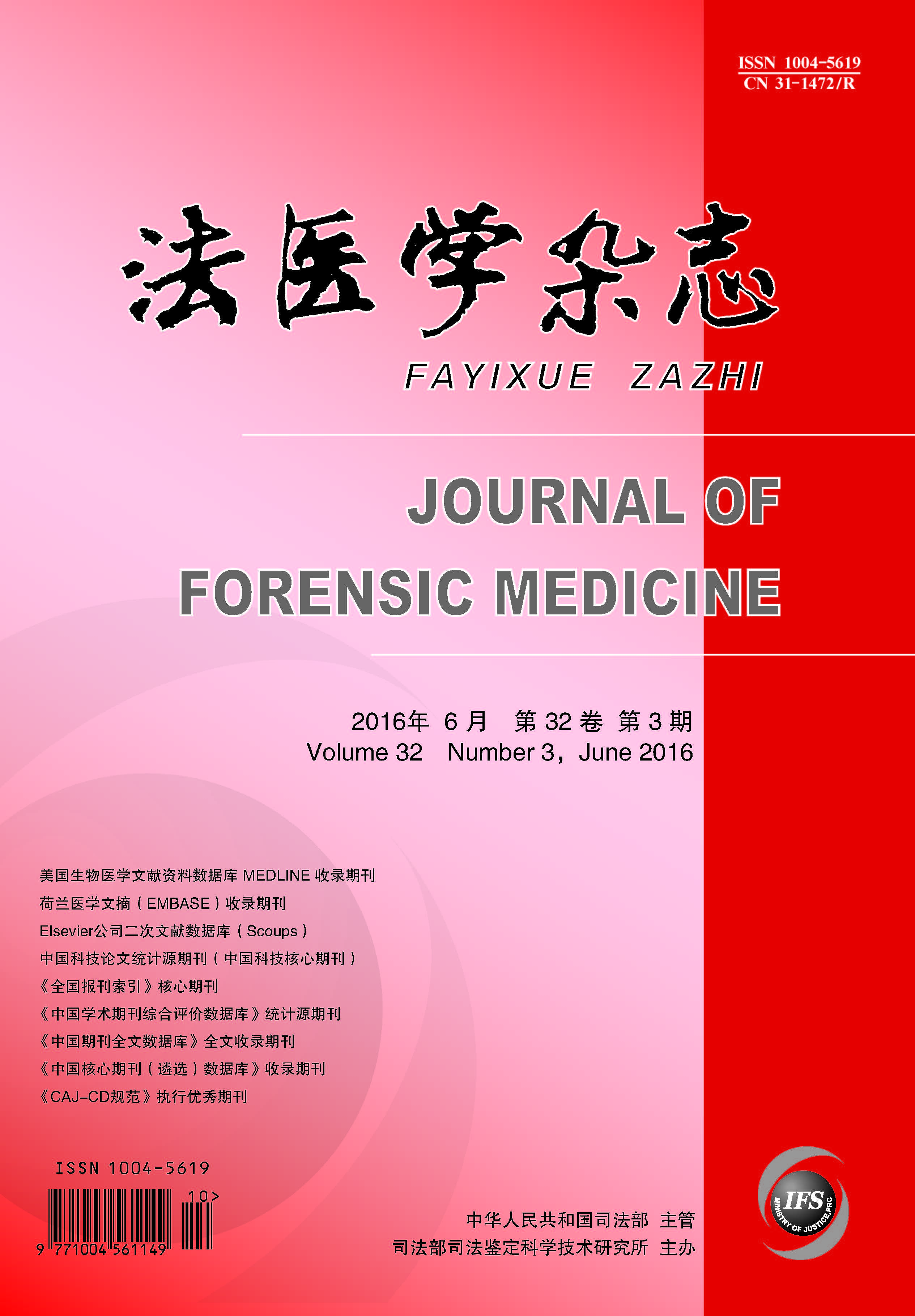|
|
Development of a Fluorescence Multiplex Amplification System with 24 Y-STR Loci
LIU HONG, LI YUE, LIU CHANG-HUI, ET AL.
2016, 32(3):
180-183.
DOI: 10.3969/j.issn.1004-5619.2016.03.005
Objective To establish a novel multiplex amplification system which comprises 24 Y-STR loci. Methods Total 24 Y-STR gene loci, concluding DYS531, DYS630, DYS622, DYS552, DYS510, DYS449, DYS459a/b, DYS446, DYS443, DYS635, DYS587, DYS527a/b, DYS460, Y-GATA-A10, DYS520, DYS557, DYS522, DYS481, DYS570, DYS385a/b, DYS444, were chosen for establishing the fluorescence multiplex amplification system. The specificity, identity, sensitivity, balance of the amplification, anti-interference and accuracy of the system were detected and the gene diversity was investigated in the population of Guangdong. Results No band was found in nonhuman and female samples that were tested by the established multiplex amplification system. The same genotyping results were obtained from different tissues of the same person. Complete profiles could be obtained from more than 0.1 ng of the standard sample 9948. The loss of alleles was found when the common inhibitors such as hemoglobin and calcium ion were added 120-200 μmol/L and 1.5-2.0 mmol/L respectively to the system which with a strong anti-interference to the indigo, humic acid and EDTA. The typing of 24 Y-STR system could give the reliable results when 146 unrelated male individuals were detected and compared with the Yfiler system parallelly. The haplotype diversity (HD) of the population in Guangdong reached 0.999 72 that was better than the result retained from Yfiler system, which the HD was 0.998 58. Conclusion The fluorescence amplification system with 24 Y-STR loci established in present study has a wildly application prospect and can be used for cases inspection, paternity tests and Y-STR database construction.
Related Articles |
Metrics
|


